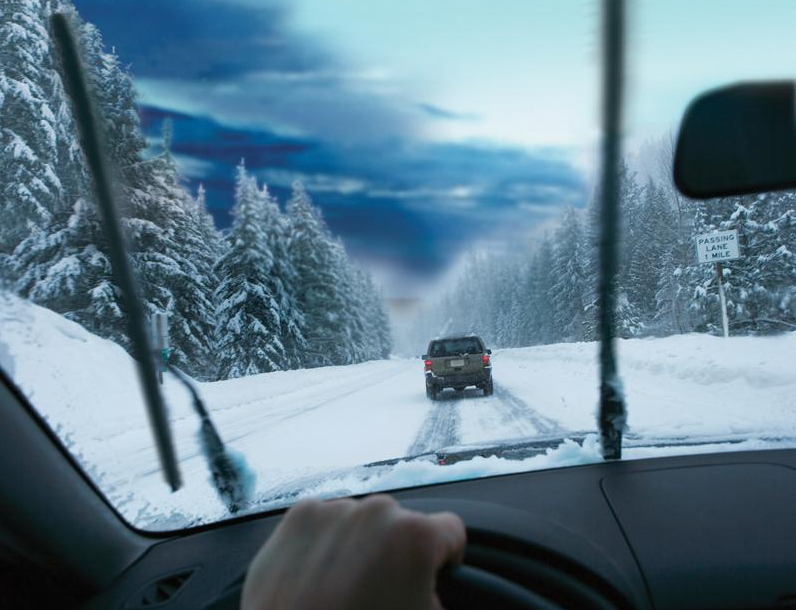
Winter comes with a unique set of challenges, including lower air temperatures, lack of visibility, fewer daylight hours, falling snow and, of course, icy roads. These can certainly make for some hazardous driving conditions, which is why experts say you should dig out your ice scraper, gloves and snow shovels before hitting the road.
“Don’t set off like a tank commander with a tiny hole cleared,” says Andy Smith, a patrolman in Canada.
The safest way to prepare for winter driving is to be proactive before an emergency occurs. The following tips will give you some ideas on how to drive safely all winter long:
- Surface Conditions. Roads and drive paths are likely to be covered with rain, sleet, snow and ice, which causes slippery driving conditions and reduces tire traction. Consider using snow tires in areas where winter weather is severe. It’s also important to inspect your tires for uneven wear, cupping and proper tread depth. Also consider the last time you had the tires rotated, balanced and aligned.
- Emergency Situations. Winter weather increases the chance of getting into a car accident. Pack an emergency kit to leave in your vehicle at all times. Consider including safety items such as flares, medical supplies, jumper cables, a flash light, batteries, a small shovel and tire chains. Also consider comfort items like blankets, gloves and snacks.
- Clear Vision. Snow, ice and fog diminish your visibility, creating dangerous driving conditions. Remove all debris from your windshield, windows and outside mirrors before driving. Replace your wiper blades with extreme-weather blades for a stronger wipe to battle heavy rain, snow and ice buildup. The TRICO Ice wiper blade (www.tricoproducts.com) is designed to distribute even pressure for a clearer wipe, while the contour complements new vehicle models and maximizes your line of sight.
- Vehicle Performance. Follow the recommended maintenance schedule in your vehicle’s owner’s manual to avoid hard starts, stalling and lost power during colder weather. Keep your gas tank above the halfway mark because empty tanks collect condensation, which damages the engine.
Some regions experience heavy snow and dangerous ice storms, others find an increase in rainy conditions, and in some places, temperatures may just cool down a bit. Regardless of location, the winter season brings a climate change that all drivers should consider.



